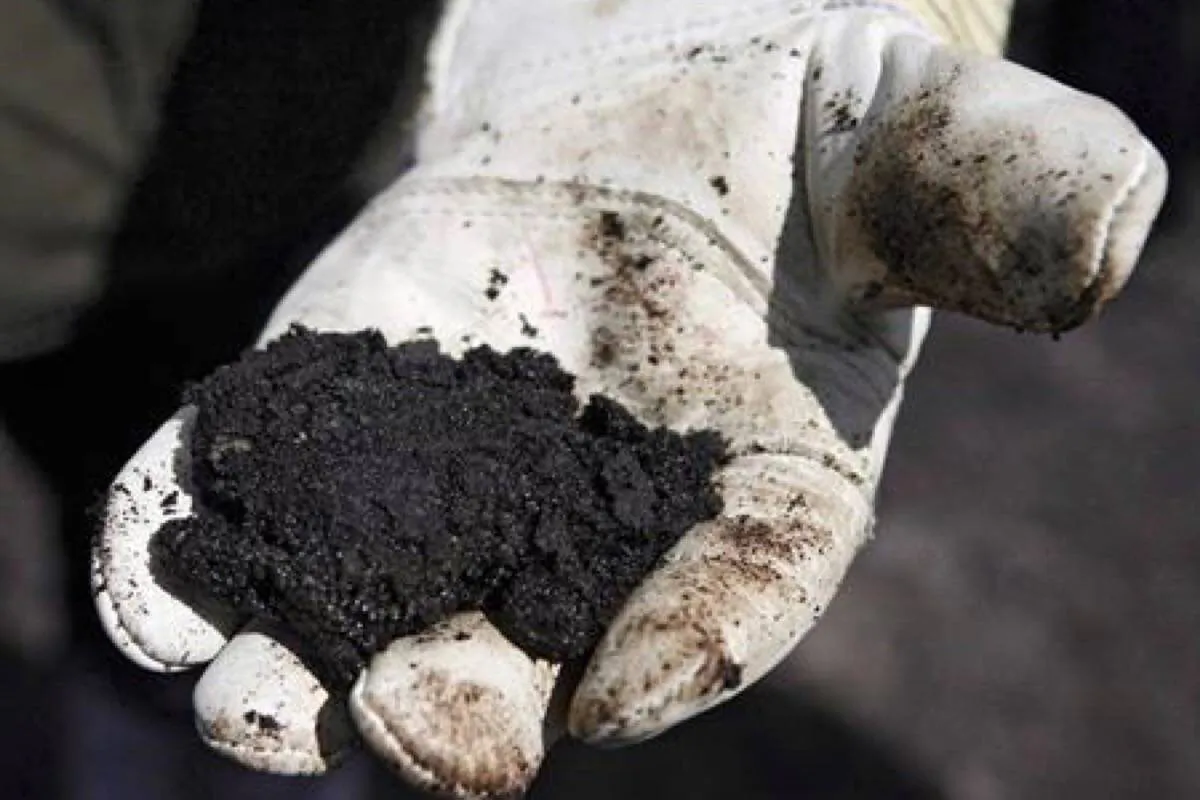Curiously. what makes the oil sands attractive is that once the oil is removed, you have sand that actually supports remediation itself. still fussy, but trees can and will take root and over time we have a real natural forest soil complex. This is no mine tailing that is still mineralized but also deeply broken exposing that mineralization and years away from real remediation.
And oh yes, near surface oil sands really need to be processed this way when it is exconomic. You so do not want to step into all this. Recall the asphault pits of trinidad and understand that these are merely covered by a thin overburden, best called loon S**t
And yes we are a major force in uranium production, The deposit at McArthur Lake is a mind blowing plus 20% and lots of it. It has to be mined remotely using vertical coring.
Michael Taube: Saskatchewan’s Success With Uranium Could Be Alberta’s Renewed Success With the Oilsands
An oil worker holds raw oilsands near Fort McMurray, Alta., in a file photo. (The Canadian Press/Jeff McIntosh)
June 19, 2023Updated: June 19, 2023
https://www.theepochtimes.com/michael-taube-saskatchewans-success-with-uranium-could-be-albertas-renewed-success-with-the-oilsands_5340531.html
Commentary
Saskatchewan, one of the world’s leading sources of uranium production, recently announced a significant achievement.
“Saskatchewan is now the second largest producer of uranium in the world!” Premier Scott Moe tweeted on June 15. “Ranked third in 2021, Saskatchewan has now passed Namibia and Australia making our province a front-runner in supplying a reliable, stable and sustainable supply of uranium.”
Moe’s tweet went on to say, “With production expected to almost double in Saskatchewan this year, this increase ensures more jobs and opportunities for people right here at home. That’s growth that works for everyone.”
The World Nuclear Association’s “Uranium Production Figures, 2013-2022” confirmed this impressive statistic. While all countries rank well behind Kazakhstan in uranium enrichment, Canada has rebounded after losing a few steps in 2020 and 2021 due to mine shutdowns during COVID-19. This is largely due to the nearly $1 billion-a-year uranium industry in Saskatchewan.
“The Cigar Lake mine and McClean Lake mill operated continuously throughout 2022, resulting in increased production,” the Saskatchewan government highlighted in a June 13 press release. At the same time, “the reopening of the McArthur River mine and Key Lake mill, announced in February 2022, also contributed to increased Saskatchewan uranium production in the later months of the year.”
Saskatchewan, which employed 1,842 people in uranium production in 2021, is “currently expected to produce 15 million kilograms of yellowcake, almost double last year’s number.” If this estimate materializes in 2023, Canada could ultimately become as competitive with Kazakhstan’s uranium production as it was between 2015 and 2017.
Saskatchewan’s important move up the uranium production table, much like its world-leading status in the potash industry, is an example of Canada’s economic potential when it comes to areas like mining, oil and gas exploration, and energy independence. Alas, some of this potential has remained untapped and unrealized for decades.
Alberta’s oilsands is a prime example.
According to the Alberta government website, the oilsands produces 160.1 billion barrels annually. This includes Athabasca, the largest oilsands deposit located in the city of Fort McMurray, along with the Cold Lake oilsands and Peace River oilsands. Crude bitumen production in 2021 totalled 3.3 million barrels per day. This means the province has the fourth-largest oil reserves in the world, only behind Venezuela, Saudi Arabia, and Iran.
That’s great, but there’s a significant issue that remains unresolved.
These statistics only refer to proven reserves, or the surface mining of crude bitumen production that’s been accounted for. A massive amount of Alberta’s oilsands, as well as the Western Canadian Sedimentary Basin that includes Alberta, southwestern Manitoba, southern Saskatchewan, northeastern British Columbia, and the southwest corner of the Northwest Territories, has never been developed. According to the Canadian Association of Petroleum Producers, “since oil sands operations began in the 1960s, about 8% of the active mining footprint has been or is being reclaimed.”
Why has oilsands development been so limited in Alberta?
It’s primarily due to long-standing historical divisions between the provincial government and anti-oil activists, left-wing environmental groups, some First Nation bands, and others. Organizations like Greenpeace Canada prefer to use the old, outdated name “tar sands” to describe the oilsands deposit, claim it’s a “key culprit” in greenhouse gas emissions, climate change, and our carbon footprint, and that “the world can’t afford to expand [it] if we want to preserve this planet for future generations.”
These politically motivated and agenda-driven groups have unsurprisingly ignored new technological advances in the oil and gas industry that have helped make the process safer, more effective, and cleaner. John Bailey specifically isolated five of them for the U.S.-based Oilman Magazine in an Oct. 28, 2019, piece, including data analytics, electronic monitoring, and artificial intelligence. Many more will surely be developed in the years to come.
Tending to the oilsands’ unproven reserves would undoubtedly increase overall oil production in Alberta and Western Canada. It would also substantially increase overall profits, and lead to more drilling expeditions, domestic and international investment, and job opportunities for Canadians.
Alberta Premier Danielle Smith knows the oilsands are vitally important to her province. She’ll hopefully be examining ways to increase oil production following her successful re-election bid. It’s also something that Conservative Leader Pierre Poilievre could take up as an issue related to Canada’s energy independence, either on or before the next federal election.
Saskatchewan’s renewed success with uranium could serve as a model (and motivating factor) for Alberta’s potential success with the oilsands. Since Saskatchewan is also geographically linked to part of Alberta’s undeveloped oil deposit, there should be more than enough interest, motivation, and ways to share information, ideas, and future goals for oilsands development.

No comments:
Post a Comment